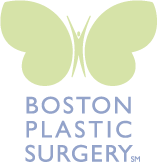Botox Refined, Improved By British Scientists
Posted on October 29, 2010 | by caketeamScientists at the Medical Research Council’s Laboratory of Molecular Biology recently developed a new way to refine the popular injectable wrinkle relaxer Botox, improving and expanding its uses for pain management and treatment of neurological diseases.
The new refinement technique, which essentially involves joining and rebuilding Botox molecules, may also improve the production process for Botox-based medicines, including the popular wrinkle relaxer Botox Cosmetic.
“It will now be possible to produce Botox-based medicines in a safer and more economical way,” said Bazbek Davletov, the leader of the study that uncovered the new refinement method.
The refining technique discovered by Davletov and his research team could allow scientists to create new and improved forms of the drug, expanding the practical medicinal uses for Botox, for instance as a long-term painkiller that could last four to six months.
“This is the first time we have been able to treat protein molecules like Lego building blocks, mixing and matching them to create the basis for treatments that would not previously have been possible,” Davletov said.
Although Botox has been used for years to smooth wrinkles, as well as treat problems like excessive sweating (hyperhidrosis), migraines, Parkinson’s, cerebral palsy and other diseases that cause spasms, tremors and chronic nerve pain, this latest scientific breakthrough will likely make the drug even more widely used.
It remains to be seen whether the “more economical” production process for Botox made possible with the new refinement technique will trickle down to doctors and consumers. It seems unlikely to decrease the cost of Botox injections, given the fact that the introduction of Botox-competitor Dysport to the cosmetic medicine marketplace did not lower the Botox cost.
Botox is currently FDA-approved to treat wrinkles, dystonia and migraines, and Botox will likely become even more widely used as scientific advances continue to improve and expand its uses.
